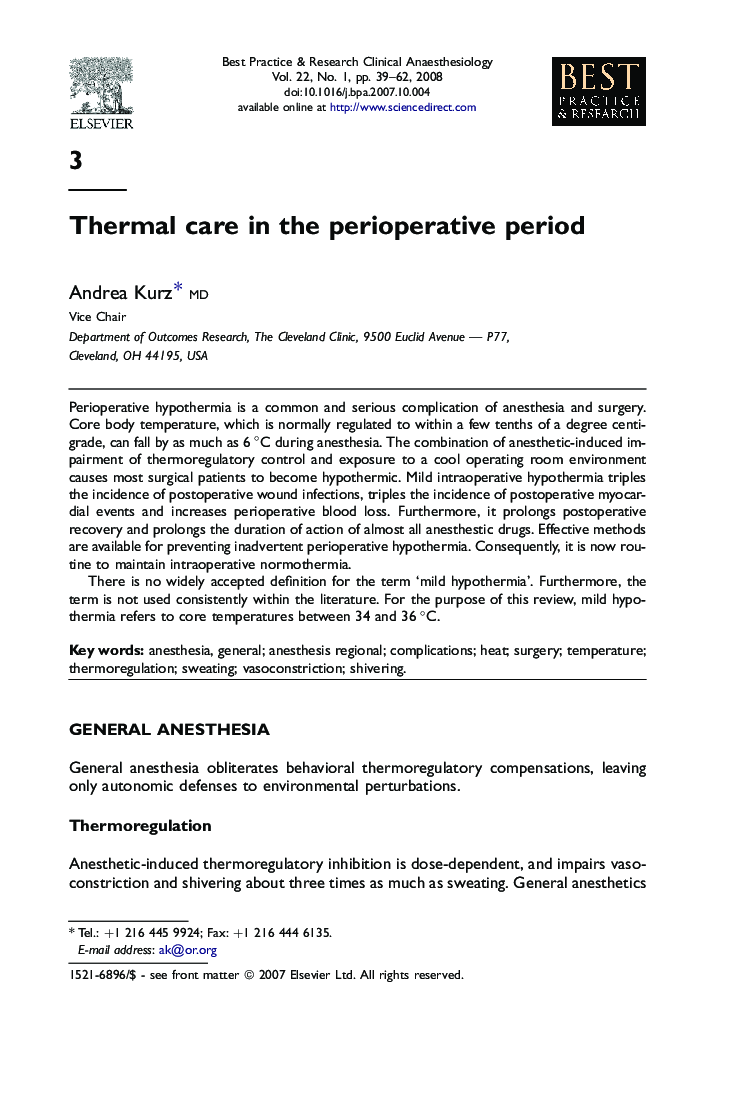| Article ID | Journal | Published Year | Pages | File Type |
|---|---|---|---|---|
| 2748823 | Best Practice & Research Clinical Anaesthesiology | 2008 | 24 Pages |
Perioperative hypothermia is a common and serious complication of anesthesia and surgery. Core body temperature, which is normally regulated to within a few tenths of a degree centigrade, can fall by as much as 6 °C during anesthesia. The combination of anesthetic-induced impairment of thermoregulatory control and exposure to a cool operating room environment causes most surgical patients to become hypothermic. Mild intraoperative hypothermia triples the incidence of postoperative wound infections, triples the incidence of postoperative myocardial events and increases perioperative blood loss. Furthermore, it prolongs postoperative recovery and prolongs the duration of action of almost all anesthestic drugs. Effective methods are available for preventing inadvertent perioperative hypothermia. Consequently, it is now routine to maintain intraoperative normothermia.There is no widely accepted definition for the term ‘mild hypothermia’. Furthermore, the term is not used consistently within the literature. For the purpose of this review, mild hypothermia refers to core temperatures between 34 and 36 °C.
